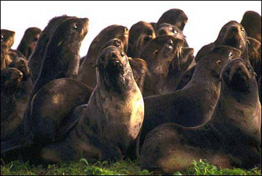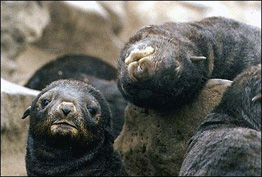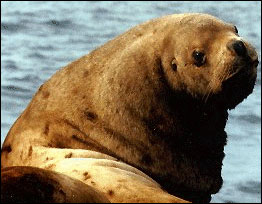 September 25, 2004
"Two counts in four years doesn't scientifically establish a clear population trend for endangered Steller sea lions in western Alaska," said Doug DeMaster, Director of the Alaska Fisheries Science Center, "but the numbers point towards stabilization or increase of that population." "Northern fur seals are another story," said DeMaster. "We have seen a serious decline starting about 1998, and we don't understand the factors responsible." Northern fur seals are considered depleted under the Marine Mammal Protection Act. Scientists have just finished their analysis of the 2004 count for northern fur seals in the Pribilof Islands and recorded that, once again, fewer pups have been born this year than during the previous biennial estimate, with a population decline rate of about 6% annually since 1998. NOAA Fisheries scientists estimate that the western Steller sea lion population increased approximately 6% to 7% from 2002 to 2004. That is similar to the rate of increase observed between 2000 and 2002. Between 1991 and 2002, the western Steller sea lion population declined at about 4% per year on average. The eastern stock of Steller sea lions (southeast Alaska to California) has increased at 2 to 3% per year overall from the early 1980s to 2002. Causes for the recent population changes for northern fur seals (Callorhinus ursinus) and Steller sea lions (Eumetopias jubatus) are not known. The ebb and flow of available prey, perhaps influenced by large-scale fishing and natural ecosystem fluctuations is one possible factor. The complexity of ecosystem interactions and limitations of data and models make it difficult to determine how fishery removals may have influenced the populations. Other factors which may have contributed to past and present declines of northern fur seals and Steller sea lions include parasites and disease, injuries, pollutants, general nutrition, and predation by killer whales.
On the web:
Source of News:
Source of Photographs:
|
||


